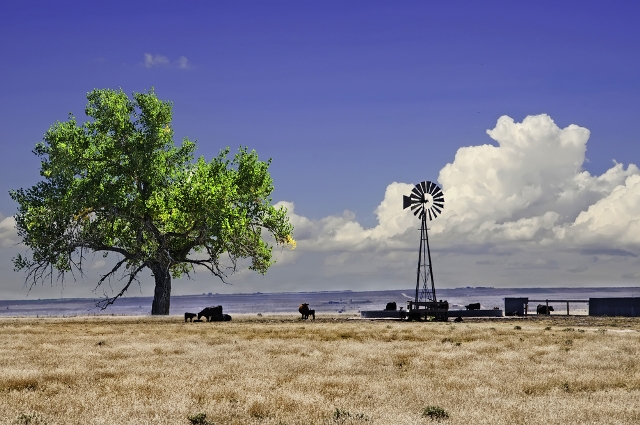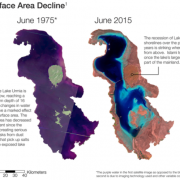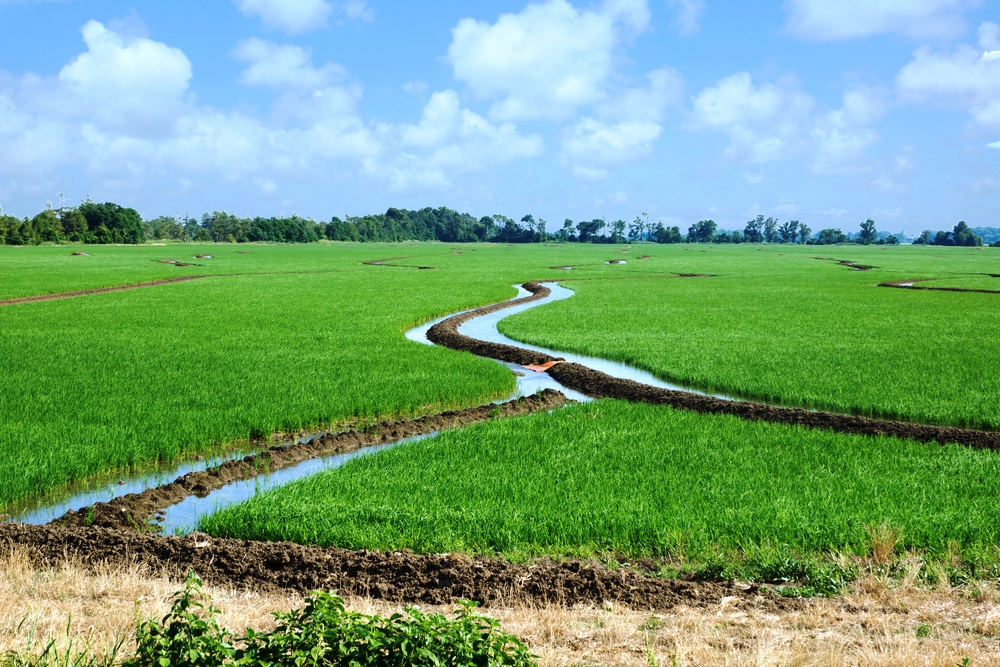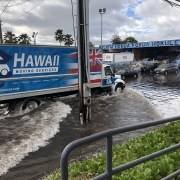Water and Climate Safety, Finance Security, Drive Keystone XL Conflict
Nebraska is again a battleground over tar sands oil pipeline.
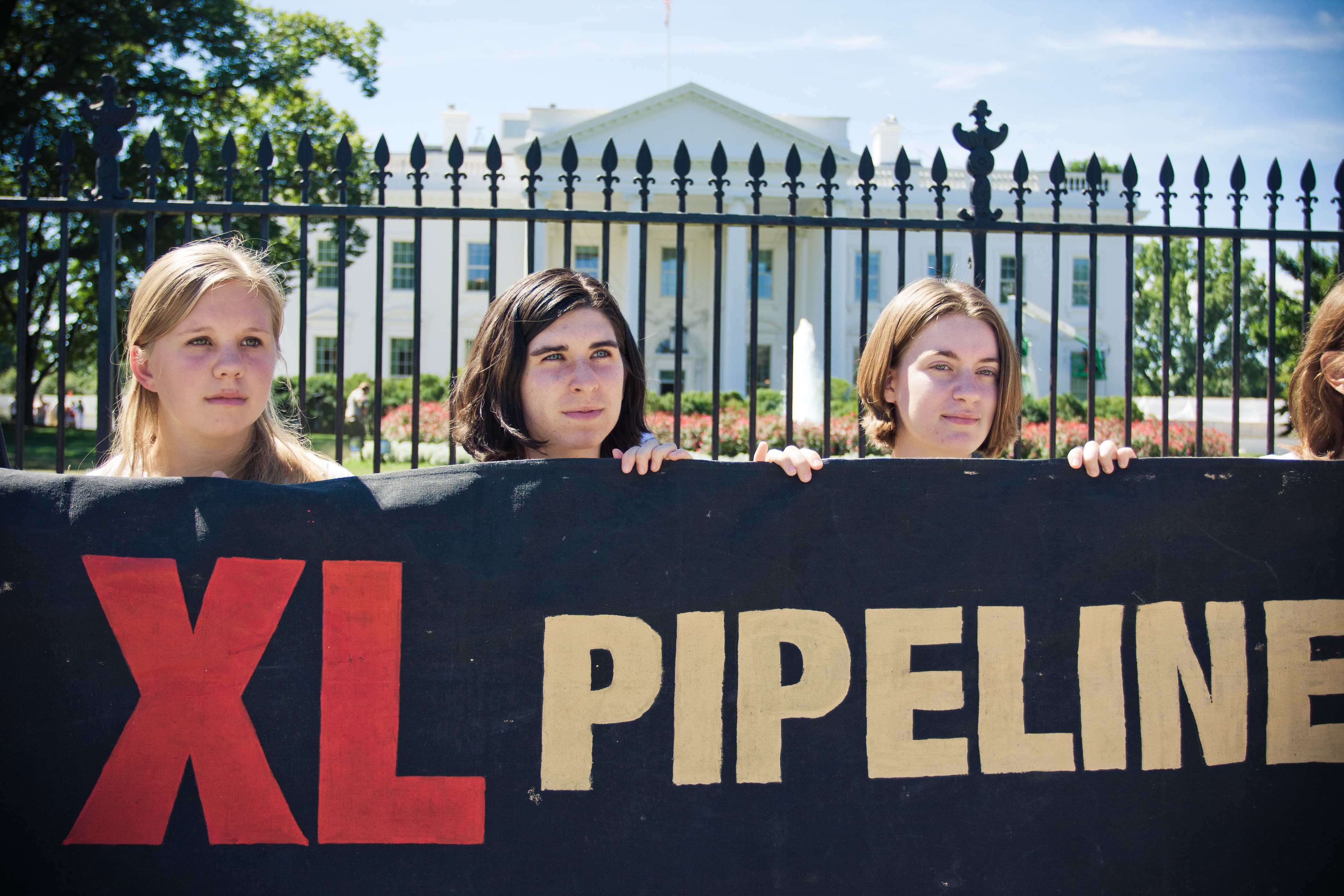
The Obama administration denied TransCanada a permit to build the Keystone XL pipeline in 2015 following big and active demonstrations, including this one at the White House. Photo courtesy of Creative Commons
By Keith Schneider, Circle of Blue
On January 24, President Donald Trump made good on a “Day One” campaign pledge to assist America’s oil producers.
Trump signed one executive order that commanded the Army Corps of Engineers to issue an easement for the Dakota Access pipeline to cross beneath the Missouri River, the last link needed to complete the 1,172-mile route from North Dakota to Illinois. He signed a separate order that invited TransCanada to resubmit its application to build the Keystone XL oil pipeline from Alberta to Nebraska. Exactly two months later, on March 24, the administration approved a permit to allow the 1,179-mile pipeline to cross into the United States.
It has been almost seven years since a rupture in a pipeline owned by Enbridge, Inc. poured 1.2 million gallons of Canadian tar sands oil into Michigan’s Kalamazoo River and tributaries. It was the largest inland oil spill ever in the United States.
Just as in 1969, when an offshore oil spill killed birds and soaked the Pacific coastline near Santa Barbara in black goo, the Kalamazoo spill stirred a new period of public activism to safeguard the nation’s waters. The Santa Barbara calamity set the stage for Earth Day and passage of the federal Clean Water Act. The Michigan disaster alerted the country to the risks that fossil fuel pipelines pose to freshwater resources.
Ensuring the safety of rivers, lakes, and aquifers is now the primary civic principle driving public protests against fossil fuel pipelines all across the country. Grassroots activists, working with lawmakers of both parties, have blocked pipelines in Georgia, Kentucky, Minnesota, New England, New York, Minnesota, Ohio, and Texas.
No region of the country, though, has experienced fiercer fights over water safety and pipelines than the northern Great Plains. Last year Native Americans and thousands of allies encamped in North Dakota temporarily halted completion of the Dakota Access pipeline.
This year, following the president’s actions, opponents and supporters in Nebraska are preparing for the second round of a momentous confrontation over the Keystone XL pipeline. Montana and South Dakota already have approved construction. The Nebraska Public Service Commission, though, has not. The agency has scheduled a week of public hearings in early August to consider whether to grant TransCanada permission to install 275 miles of pipeline across the state.
“I want big rallies. I want to see everybody out here,” said Linda Anderson, the state director for Bold Nebraska, a public interest group, in an interview. Bold Nebraska was at the center of the first round of protests. It is organizing with state and national organizations and several Native American tribes to halt the big pipeline again.
The project has well-placed supporters who will seek to use their influence. “As members of the Nebraska Legislature, we are well-versed in the issues and history surrounding the Keystone XL pipeline project and wholeheartedly support the project moving forward,” countered 33 of the state’s 49 senators in a letter to the Nebraska’s Public Service Commission last month.
Though forecasting the future is troublesome, it seems likely that the hearings could attract a huge gathering of dissent.
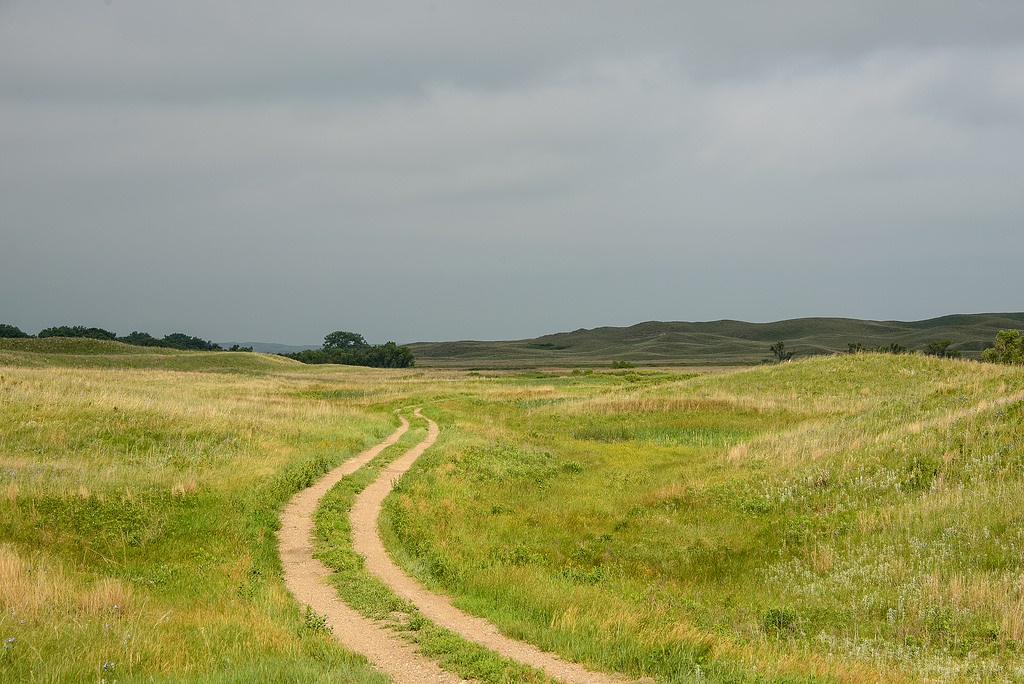
The Keystone XL pipeline’s route in Nebraska includes a stretch that crosses the Sandhills, a mixed-grass prairie with porous soils that would allow oil spills to seep into aquifers used for drinking water and irrigation. Photo courtesy of Wikimedia Commons
Keystone XL opponents centered earlier demonstrations around water, climate change, land use, and energy policy. The protests were so big and active — demonstrators locked themselves to the White House gates — that in November 2015 President Obama declined to give TransCanada a permit to build it.
The physical details of the Keystone XL project have not changed much since then. The pipeline is designed to transport tar sands oil from a pumping station in Hardisty, Alberta, through Montana and South Dakota, to a transfer station in Steele City, Nebraska. If completed it would be capable of transporting 830,000 barrels of oil a day.
The principle environmental considerations also haven’t shifted much. In Nebraska, opponents cite indisputable evidence of frequent pipeline ruptures across the U.S. in recent years. They worry that a spill would contaminate water used for drinking and irrigation. The proposed route crosses Nebraska’s Sandhills, a mixed-grass prairie with exceptionally porous soils that lies above the Ogallala Aquifer, the primary source of water for the state’s corn and soybean crops. The government and TransCanada assert the concern is overblown and the pipeline is safe.
Opponents inside and outside Nebraska also are concerned about the effects on the climate from enabling tar sands producers to ship more of their oil to market. Scientific studies show that the process of mining, processing, converting, and using oil sands as fuel produces levels of heat-trapping carbon emissions that are much higher than emissions from oil produced from conventional wells. A flurry of lawsuits were filed last month in federal court to challenge the Keystone XL permit approval, asserting that the Trump administration’s environmental review was cursory.
New Conditions Portend Difficulty For Keystone XL
The legal, financial, and political details of the Keystone battle, though, have changed considerably in the last 17 months. The president’s executive order and construction permit are seen by the White House as vital steps to stabilize oil markets and calm ecological and social disruption that has made developing big energy infrastructure projects a perilous and costly gamble in the United States and globally.
Arguably the central economic principle of the 20th century was achieving greater efficiency through economies of mass and scale. Big dams. Big power plants. Big oil fields and pipelines. The pursuit of the “bigger is better” economic construct produced the West’s prosperity because it fit 20th century economic and ecological conditions. Natural resources and land were plentiful, accessible, and affordable. Markets steadily expanded. Government and personal wealth increased. Weather systems were more predictable. Energy was cheap. Global population was much smaller. Popular resistance, especially in rural areas targeted for big construction projects, was disorganized, isolated, and lacked influence.
Well into the second decade of the 21st century, all of those conditions have flipped. A new state of ecological and economic menace has formed. Resources are more scarce and inaccessible. Markets are shrinking and erratic. Climate change has produced weather systems that are less predictable and much more dangerous. Construction costs of big projects are climbing. Lending practices are tightening as powerful financial institutions grow leery about supporting risky projects.
Lastly, there are more people living in more places, and they are better connected, better financed, and more prepared to resist immense new industrial projects.
Keystone XL As Target
The Keystone XL proposal is caught at the center of that storm. The basic economic considerations that prompted TransCanada to propose the pipeline in 2008 have shifted markedly. At the time oil was over $US 100 a barrel. Production in the tar sands region was increasing rapidly. Public concern about water pollution from pipelines and the effect of carbon dioxide on the planet’s climate had not attained such high public priority. Big pipeline protests had not started in the United States.
With such agreeable conditions, TransCanada and its customers argued that the pipeline’s $US 8 billion estimated construction cost appeared reasonable for transporting such a valuable resource. Twenty-one big banks provided $US 5 billion in revolving credit to TransCanada’s pipeline business in three loans that were updated in December, according to the Rainforest Action Network, which tracks investments in resource-related infrastructure projects.
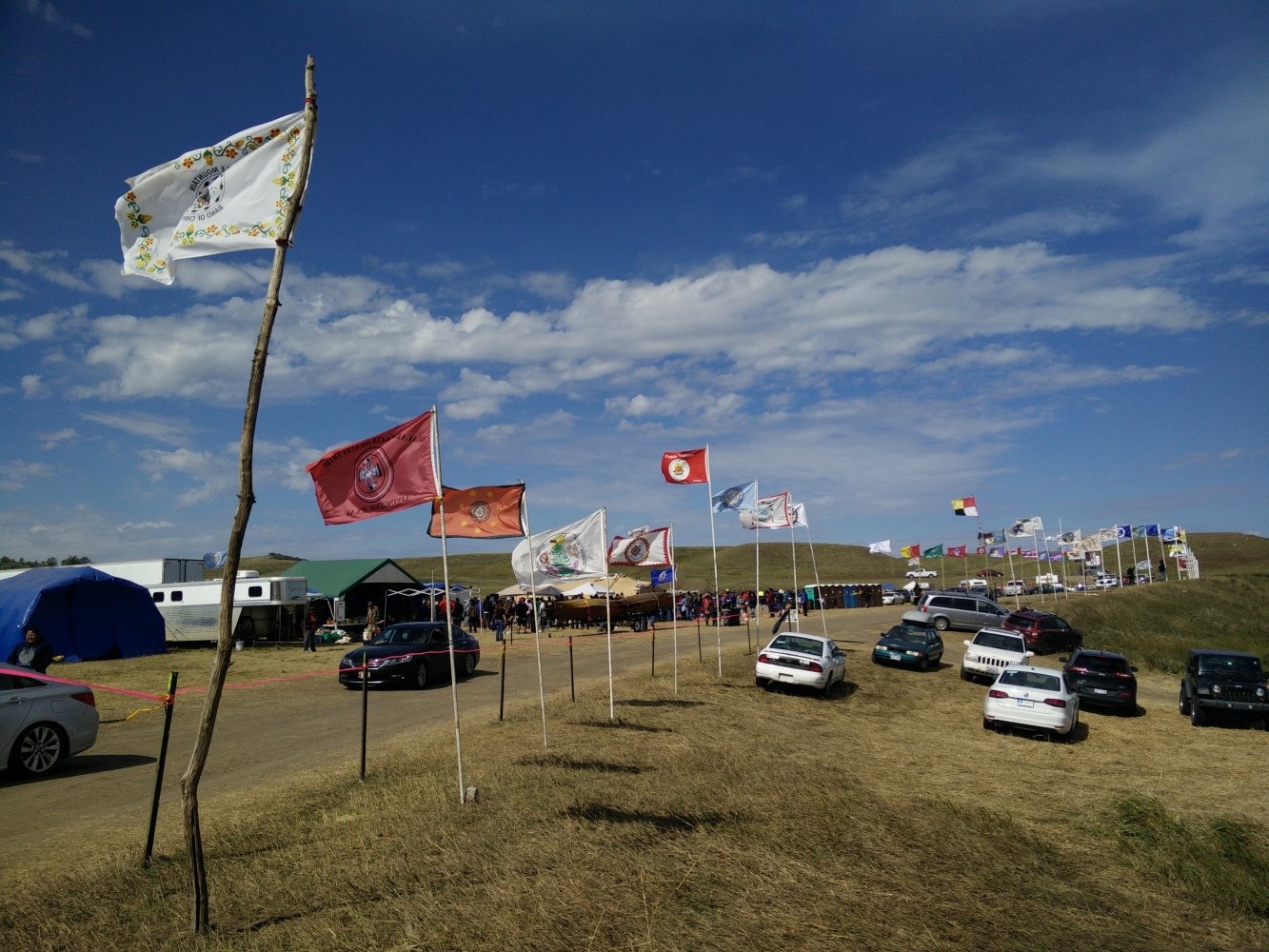
In 2015, thousands gathered in North Dakota to demonstrate against the Dakota Access pipeline in the year’s most visible public protest in the United States. Opponents of the Keystone XL pipeline are preparing to renew the fight against a suddenly revived project. Photo courtesy of Creative Commons
All of those factors are markedly different today. Oil prices collapsed and are about half their previous value. TransCanada will be forced to renegotiate shipping contracts at much lower fees. Oil sands production has become erratic with changing oil prices. Exxon has written off 3.5 billion barrels in tar sand reserves that it cannot develop. Conoco Phillips wrote off 1.2 billion barrels of stranded tar sand assets. Shell, Statoil, and Total SA all sold their tar sands reserves in recent years.
Political factors are much more urgent than they were, as well. Climate change and water safety are prominent civic priorities. The 2015 Paris climate agreement set clear limits for climate changing emissions. Pipeline opponents are well-organized and have shown themselves fully capable of scheduling demonstrations that galvanize national attention. Opponents also see in President Trump’s early record of supporting the fossil industry and weakening environmental regulation a visible new organizing target.
Taken together, the financial risk in building the Keystone XL is much higher than in 2015. Project costs, according to TransCanada figures, are rising at least $US 450 million a year. That means that if built, the pipeline’s price tag would exceed $US 10 billion. The company’s lenders, among them Citibank and Wells Fargo, ran into serious opposition from customers for supporting the Dakota Access pipeline. Protests erupted at branch offices. City councils in Seattle, San Francisco, and Davis, California, approved measures to transfer billions in city funds to banks that were not involved in the Dakota pipeline. And there are three competing pipeline proposals to transport tar sands oil to markets. One proposed by Enbridge that would cross Minnesota has also generated stiff public opposition.
Executives at TransCanada nevertheless celebrated President Trump’s actions on their behalf. Russ Girling, TransCanada’s president and chief executive officer, called the permit approval “a milestone.”
“We greatly appreciate President Trump’s administration for reviewing and approving this important initiative,” Girling said in a statement. “We look forward to working with them as we continue to invest in and strengthen North America’s energy infrastructure.”
Energy analysts offered a different perspective. Some projected that the Keystone XL may not be built. “There’s still a number of hurdles,” Justin Bouchard of Desjardins Capital Markets told Canada’s CTV News Channel. “I’m sure we’re going to see blockades like we saw with the Dakota Access pipeline. It’s certainly not a foregone conclusion that this thing will be built.”
Circle of Blue’s senior editor and chief correspondent based in Traverse City, Michigan. He has reported on the contest for energy, food, and water in the era of climate change from six continents. Contact
Keith Schneider



